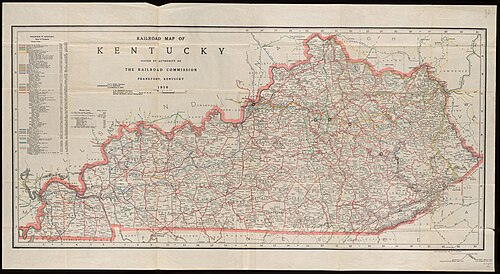
Throughout its history, Kentucky has functioned as a key crossroads for a wide variety of migrating populations, beginning with Indigenous tribes well before European contact and continuing through modern global immigration trends. Its geography—dominated by the Cumberland Gap, the Ohio River, and the rolling Appalachian foothills—offered both strategic trade routes and fertile farmland that attracted settlers, entrepreneurs, and, tragically, those who were forcibly relocated. As a result, Kentucky’s cultural and economic foundations were shaped by the interactions of diverse groups, ranging from Scots-Irish pioneers and enslaved African Americans to Irish, German, and later Latin American immigrants.
Research your ancestors on MyHeritage
List of Kentucky historical migration routesList of Kentucky historical migration routes
| Time Period | Ethnic Group | Origination Location | Arrival Location (in Kentucky) | Motivating Factors |
|---|---|---|---|---|
| Pre-1700 | Indigenous Tribes (e.g. Shawnee, Cherokee, Chickasaw) | Various regions of the southeastern North America | Throughout present-day Kentucky river valleys, hunting grounds, and strategic trade routes | Seasonal hunting, trade, inter-tribal alliances, and territorial control |
| 1760s–1770s | Long hunters and early European explorers | Primarily Virginia and North Carolina | Eastern and central Kentucky (via the Cumberland Gap and the Wilderness Road) | Exploration, fur trading, and land speculation |
| 1775–1792 (Pre-statehood settlement) | Predominantly Anglo-American and Scots-Irish settlers | Coastal and piedmont regions of Virginia and North Carolina | Bluegrass region around Lexington and central Kentucky | Access to fertile land, frontier opportunities, escape from overcrowded colonies |
| 1792–1860 (Early Statehood to Civil War) | Enslaved African Americans (forcibly relocated) | Southern slaveholding states (Virginia, Maryland, the Carolinas) | Plantations and farms across central and western Kentucky | Expansion of slavery-based agriculture (tobacco, hemp), domestic slave trade |
| 1830–1850 | Irish and German immigrants | Ireland and various German states (pre-unification) | Louisville, Covington, and other urban/river port towns | Famine relief (Irish), political unrest (German revolutions), economic opportunity in growing trade centers |
| 1838–1839 (Trail of Tears passage) | Cherokee (forced removal) | Southeastern U.S. (especially Georgia, Tennessee, North Carolina) | Routes passed through western Kentucky (though most Cherokee continued westward to Oklahoma) | Forced displacement by U.S. government under the Indian Removal Act |
| 1865–1880 (Post-Civil War Reconstruction) | Freed African Americans | Former Confederate states (especially surrounding states like Tennessee) | Developing African American communities in urban centers (e.g., Louisville) and rural enclaves | Emancipation, search for work, escape from racial violence, and desire for land ownership |
| Late 19th century – early 20th century | Appalachians relocating within Kentucky[1] | Eastern Kentucky counties | Growing coal-mining regions in Eastern and Southeastern Kentucky (or out-migration to cities) | Economic opportunity in coal mining, rail construction, and related industries |
| Early 20th century – 1930s | Additional waves of European immigrants (Italians, Eastern Europeans) | Various European nations (Italy, Poland, Hungary, etc.) | Louisville, coal-mining regions in Eastern Kentucky | Industrial jobs in urban centers and mining work, fleeing political unrest in Europe |
| Post-1965 – Present | Latino and other global immigrants | Mexico and Central American countries; also refugees from Asia and Africa | Major metropolitan areas (Louisville, Lexington) and agricultural regions | Search for employment in service, agriculture, horse farms, and manufacturing sectors |
References
- ↑ Migration in Inner Appalachia. Medium.com

